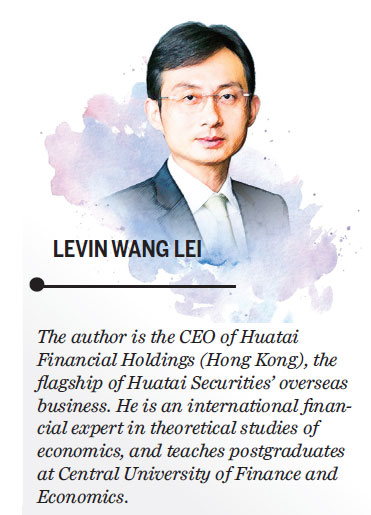Chinese assets are safe havens in a polarized global economy


In a world increasingly polarized because of unbalanced recoveries from the coronavirus pandemic, investors see Chinese stocks and bonds as good hedges against risk.
While the economic recovery is the theme of 2021, it is bifurcated by regions, industries, and social classes.
Rich countries are likely to see post-pandemic booms because of fast vaccinations, while poor ones are suffering from low access to vaccines and panic about capital outflows. Since the pandemic started last year, new economies contributed to almost all the rises in the stock market, while traditional industries, including aviation and textiles, lost their glamour. Society is also increasingly divided, with the wealthy gaining from a booming capital market propelled by stimulus policies, while blue-collar workers are seeing their assets losing value.
Based on forecasts from the International Monetary Fund, the United States ranks high among developed economies with a growth rate of more than 6 percent for this year. In spite of its domestic problems such as increasing inequality and high public debt, the US economy is still on a promising trajectory of recovery.
The US composite purchasing managers index, an indicator of economic health, reached a record high of 68.1 in May, according to IMS Markit. Such a fast expansion in manufacturing and services surpassed the eurozone and Japan by nearly 10 points and 20 points. Before the pandemic at the end of 2019, the PMI gap between them was less than 4 points.
On the other hand, major emerging economies, including Turkey, Brazil and India, are still battling serious virus infections, high unemployment, and turmoil in their governments and financial markets.
The only exception is China. Based on a strong recovery from last year, the Chinese economy is expected to grow by 8.4 percent in 2021, according to the IMF. China's relative share of US GDP rose from 67 percent in 2019 to 70.3 percent last year, which was close to Japan's share of the US economy in the early 1990s before Japan's economic bubble burst. By the IMF's current growth forecasts, China's share of the US GDP could further increase to 73.4 percent in 2021 and 75 percent and 2022.

Once a promising land for global investors, emerging markets are now risky for making a fortune.
One main risk facing developing economies is capital flight. This was, again, partly due to uneven recoveries from the pandemic globally. Major central banks have loosened monetary policies to support economic recoveries. This pushed up inflationary expectations in some developed economies and led to market speculation that some central banks would unwind their policy support to put the brakes on the potential economic overheating. The rising yield of US 10-year Treasurys, often seen as a risk-free investment, has intensified the concerns of capital flight from emerging economies. Since November, the Turkish government has increased its benchmark interest rates by 875 basis points to 19 percent to prevent capital outflows.
According to data from the Institute of International Finance, the average daily net inflows to emerging markets had reversed from $1.7 billion at the end of 2020 to daily net outflow of about $300 million by the end of the first quarter of 2021. This was worse than the 2008 global financial crisis.
During this round of polarized global economic recovery, investors have been fixing their attention at where the economy holds up.
In the first five months of 2021, equities led the rising values of major assets. Among them, US stocks performed the best, with the S&P 500 gaining more than 12 percent. The main reason is US President Joe Biden's aggressive measures to prop up the economy by increasing government spending. During his first 100 days in office, the S&P index gained nearly 9 percent, the highest increase among the last four US presidents.
In spite of the tense US-China relationship, there is still ample interest in US-listed Chinese firms. The pace of Chinese companies going public in the US stock market has not slowed down. In the first quarter, 19 Chinese companies completed IPOs in the US.
In Hong Kong, the popularity of investing in new stocks with margin financing continues to grow steadily. Compared with the A-share markets, where the chance of subscribing for new shares is as low as 1 percent, there is still a 5 to 50 percent likelihood that retail investors could anticipate making money from a post-listing share-price surge in Hong Kong, after borrowing money to buy into IPOs.
Global investors also have an increasing appetite for China's bond market, which offers higher yields on government bonds than the US Treasurys. China's benchmark 10-year bond yield stayed at around 3.1 percent at the moment, compared with 1.5 percent of its US counterpart. According to Bloomberg, by region, the Chinese mainland and Hong Kong have gained the most in recent weeks from capital inflows to exchange traded funds that invest in emerging markets' bonds and stocks.
The views do not necessarily reflect those of China Daily.

- Macao thrives as collaboration deepens
- Beijing reiterates strong opposition to US arms sales to Taiwan
- Attack in Taipei injures 9, including 4 in critical condition: local media
- Ministry to launch month-long program aimed at promoting youth employment
- National health body asks consumers to read nutritional information on food labels
- China's top cyberspace regulator launches drive against capital market misinformation




































